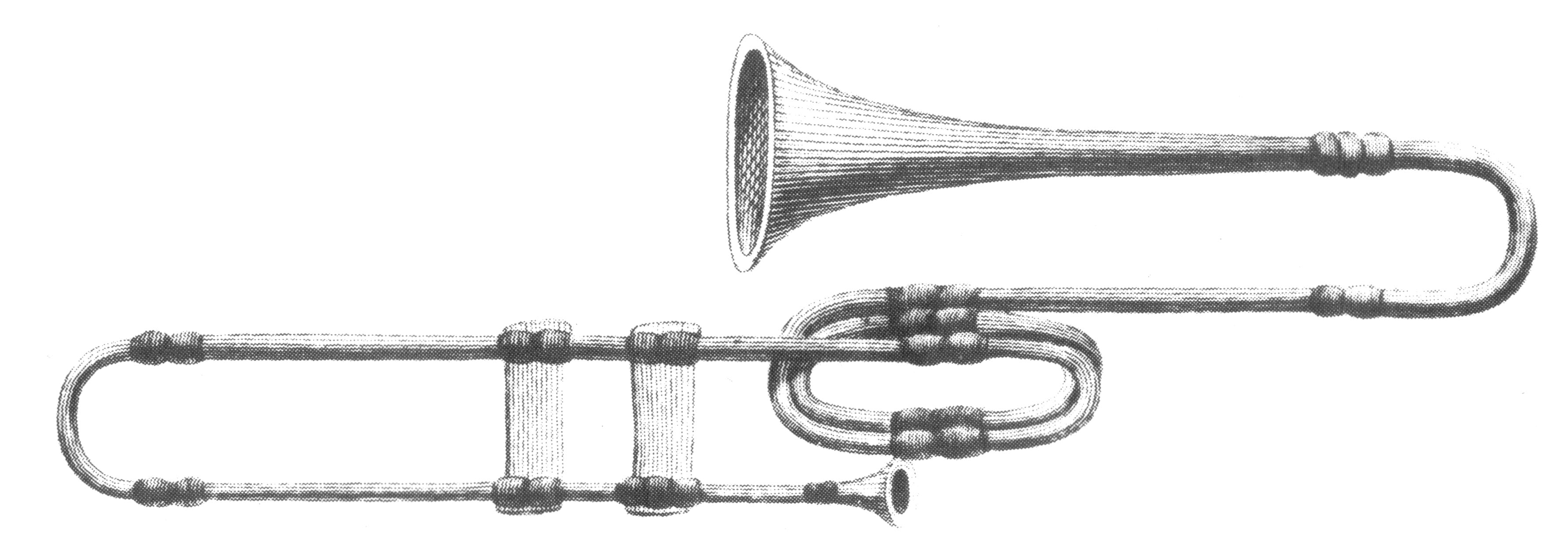

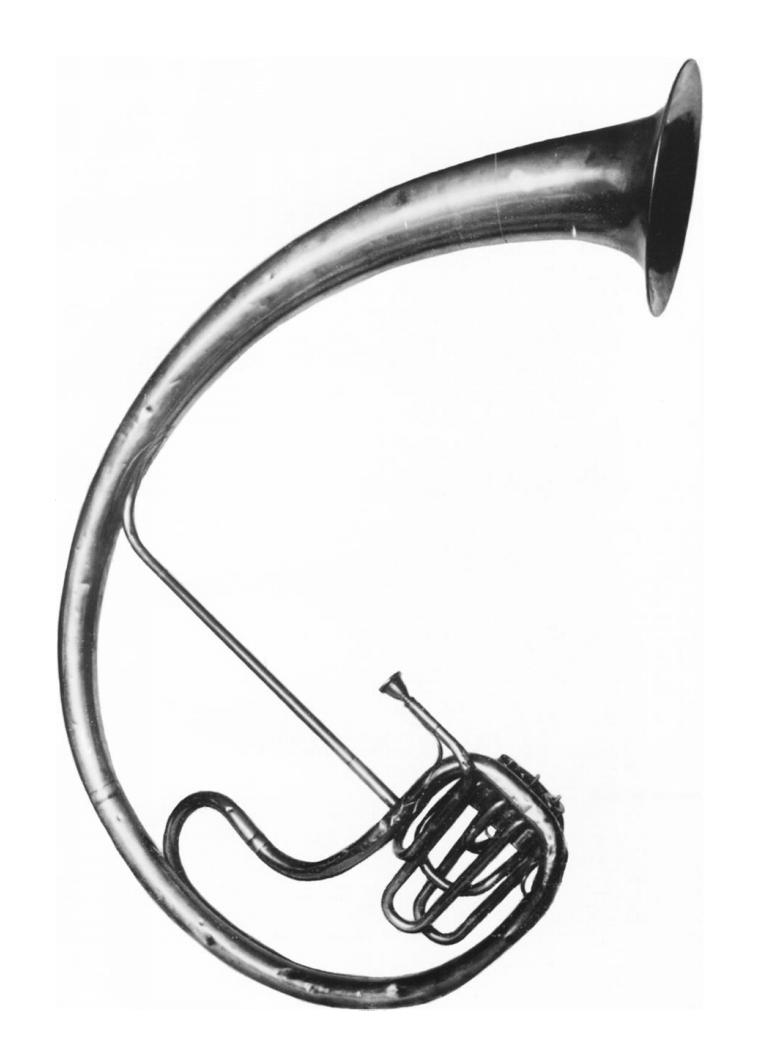
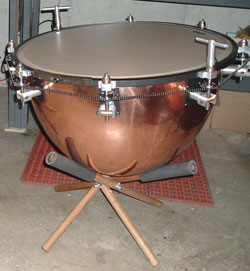
 Trombone
- the most flexible of the brass instruments, it has a sliding section
which can be moved in and out to change the note. It often
used
to played the main melody of a piece of music
|
 Zuna
- a reeded instrument, made of brass, that comes in different
keys.
It has a very disinct sound that is partway between the
drones
of a bagpipe and the clarinet.
|
Horn
- has a limited range, but travelling musicians might use
this as a substitute for the great
horn, although in large ensembles it has its own role adding
depth to the music.
|
 Great Horn
- so large that that a dwarf wears the piece over his
shoulder. Normally used to play a simple
base melody
underneath the trombone and zuna
|
 Kettle Drum - played
with large padded mallets the kettle drum provides a solid
rhythm for any brass band.
|
Gnome music is both complicated and jingly, it uses high pitched instruments such as the glockenspiel or tin-whistle for the main melody simply supported by a tamborin rattling out a rhythm, nearly all bards play one of the main instruments and have an ‘apprentice’ to rattle the tamborin for them. The few vocalists are seen as slightly lower status than the instrumentalists, although they sing incredibly complex songs, whilst backing themselves with the tamborin.
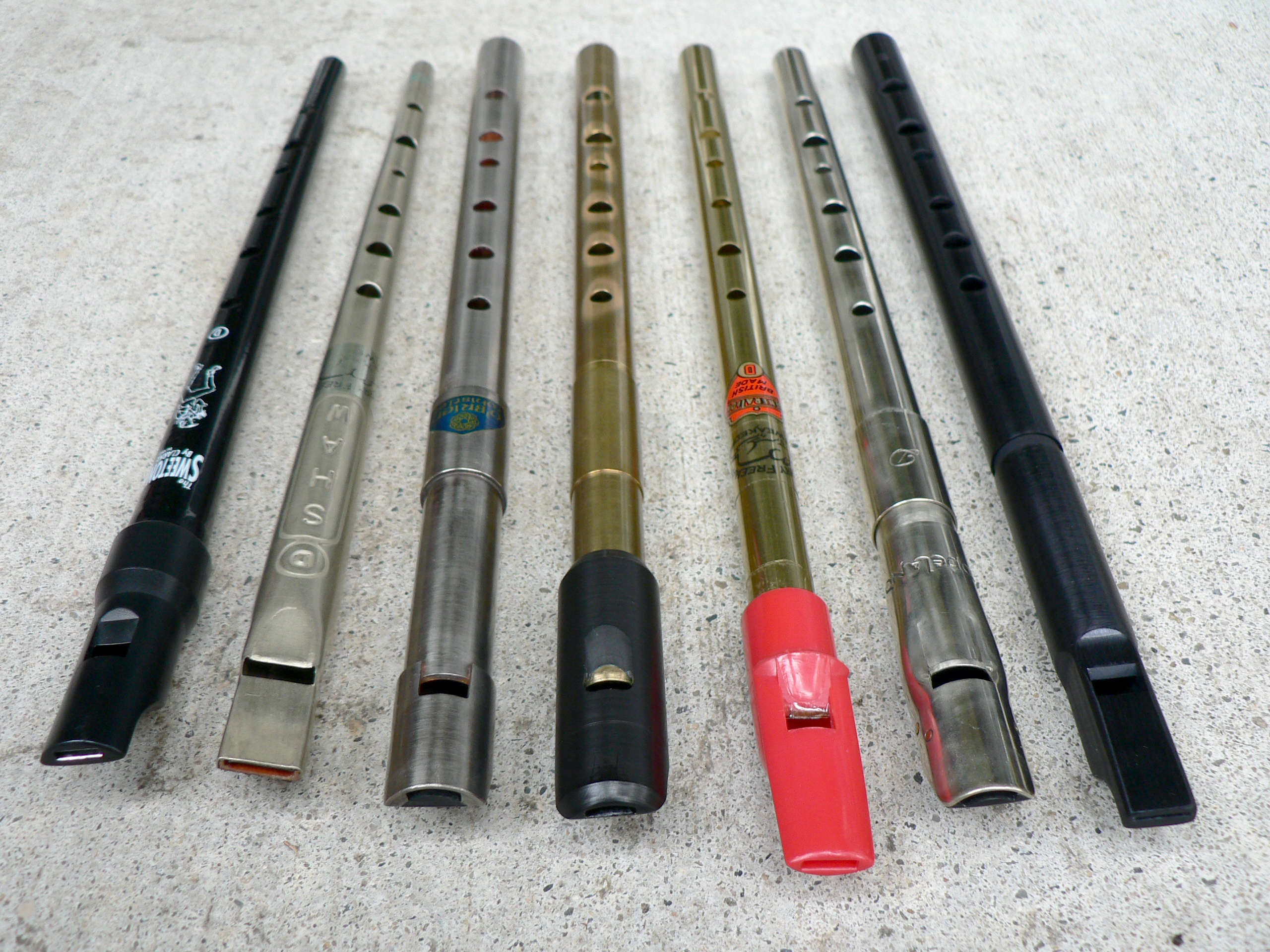 Whistle - made of a metal tube the wistle might be made from tin, copper or even silver. The whistle only has six holes, and therfore has a smaller range than the recorder, it also has a 'sharper', less mellow note that any of the other wind instruments. |
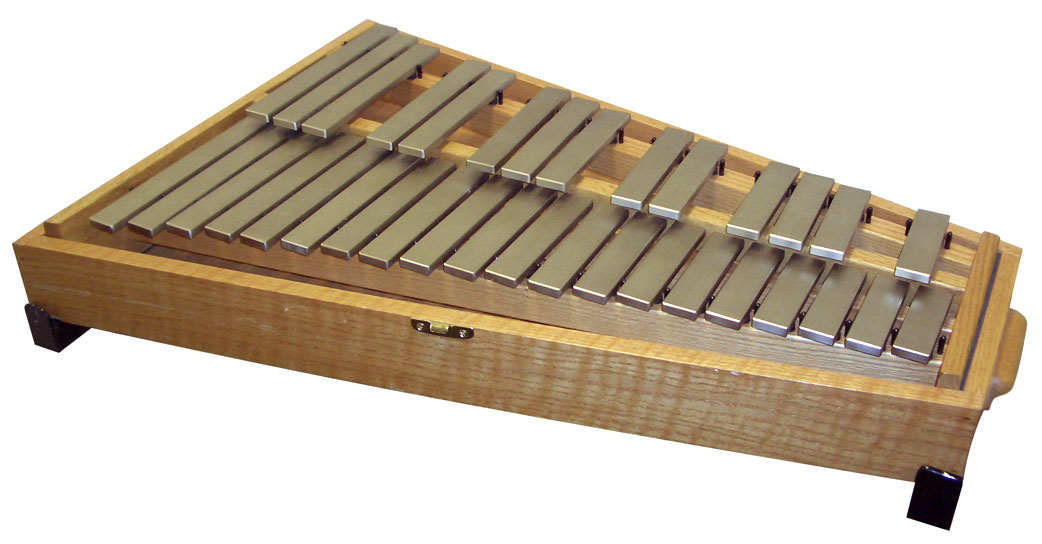 Glockenspiel - tuned metal bars often set in a case, struck with light, hard hammers to create the tune. |
 Tamborin - The Gnomish tamborin does not have a drum head but is just a collection of jingles in a frame, and is generally used by sole singers or apprentice musicians. |
Elvin musicians have years to practice their art, and their music is nearly always as complex as it is beautiful. While Elves are very receptive to new music there are three traditional Elvin styles. Solo performers are nearly always lutists, who sing beautiful ballads supported by incredibly complex tunes. Small groups nearly always consists of a drummer, dannist and ‘front man’ who either plays flute, lute or occasionally xylophone. Often it is the dannist who provides vocal support, although sometimes the group includes a specialist singer. The 'great ensemble' always includes a full rhythm section of three drummers and three dannists supporting a xylophone, lute and flute. Ensemble music always has a rich background section overplayed by soaring, complex tunes from the other instruments playing around each other. Dan, drum and xylaphone are seen as ‘journeyman instruments’ and the true artist aspires to virtuoso performance on one of the lead instruments. Less experienced and non-Elvin bards often perform simplified versions of Elvin music.
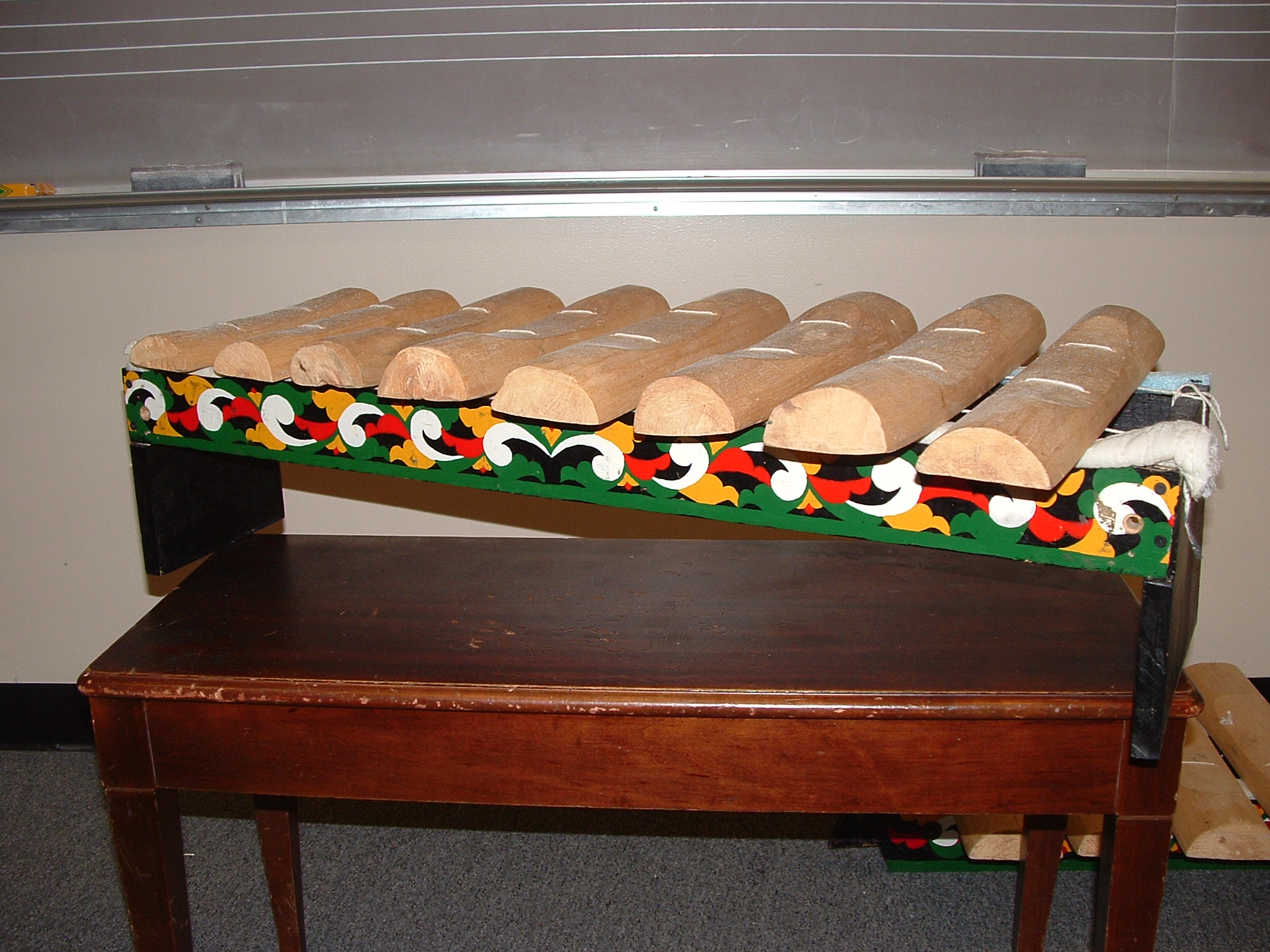
Xylophone - blocks of wood cut so they make a scale when played. The Elvin xylophone is a basic instrument, and while it can play a melody, is more limited than either the flute or the lute. |
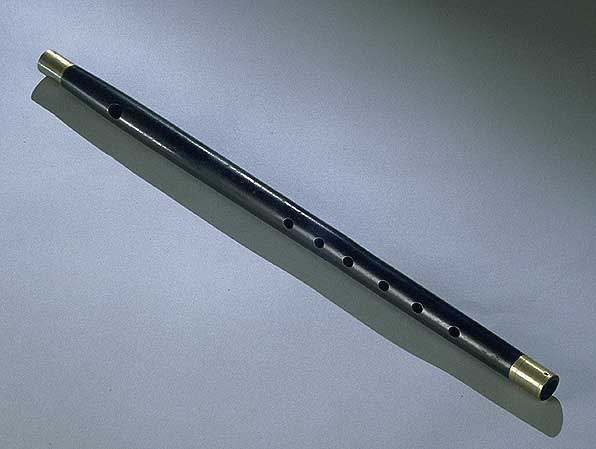 Flute - The main wind instrument of the elves the flute comes in two sizes, a small, high pitched, instrument known as a fife and the flute proper. It is a versatile instrument and produces a much clearer note than any of the other types of wind instrument. |
Lute - An Elvin lute may have as many as 17 strings arranged in courses, although these are reserved for the best players. A normal lute just has four or five courses of strings. |
 Dan
- traditionally just has two strings and is used to
play the bass part of the melody. Dan
- traditionally just has two strings and is used to
play the bass part of the melody. |
 Drum - a simple single skinned drum that is slung over the shoulder and played with the hands, rather than sticks. |
 Pan Pipes - made from hollow wooden tubes cut to different lengths, the pan pipes are often used to produce a simple melody. |
 Rattles - normally closed baskets with dried beans in, that are used to shake out a rhythm. Travelling musicians have rattles where the beans can be removed from the basket, for quieter travel. |
 Bones - Wooden sticks carved to resemble sheeps ribs. They are held in one hand and used to beat time between knee and the other hand. A skilled player will use many different parts of his body as a striking surface. |
 Block Drums - A hollowed out block of wood, struck with a stick to make a rhythm. A 'drummer' may have a set of two or three block drums all tuned to a different note. |
Pinette - has five strings, three drone srings and two fretted for playing the melody. It fits across a halfling's lap. |
Human dances
tend to be square dances based on a set of four people (two
couples) dancing together. In the halls of the nobles will be
dancing quadrilles to the sound of the harp, whilst in the
country
it is
liable to be a jig danced to the Recorder and Bodhran.
One ‘special’ style is known a Morry Dancing – a Morry side consists of
eight
people six dancers and two 'specialists'. The 'Musician' p[lays
the tune very often on a gemshorn, while the 'Foreman' acts
as the
front man interacting with the audience and dancing
through and
around the set banging a tambourine. Men dance
with sticks while women
dance with handkerchiefs. Both
men and
women decorate themselves with sashes, flying ribbons and bells for
dancing the
Morry. Most
dances
are for all men or
all women, although there are occasional mixed dances as well.
Nearly all male dances include banging and waving sticks, while
the ladies wave their hankies and pirouette a lot.
 The Harp - even the small 'Travelling Harp' is delicate and transported about in a box on a wagon. While the Great Harp is about seven feet tall and rarely moved at all. These instruments are expensive. |
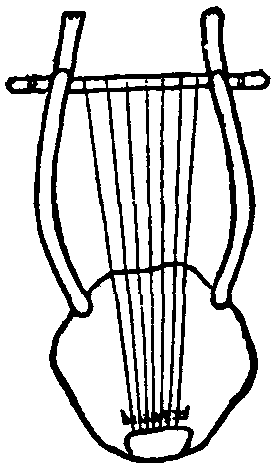 Lyre - the poor man's harp has a sound box with supporting arms for the strings. Held in one hand and strummed with the other. |
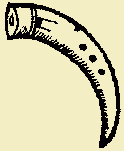 Gemshorn - made from the horn of an animal, traditionally drille with three finger holes and a thumb hole. A basic instrument favoured by shepherds and Morry Dancers. |
The Recorder - Wooden 'whistle' type flute, drilled with seven finger holes and a thumb hole. It is a very versatile instrument with a sweet tone and clear notes. |
 Tambourine - a small drum with jingles around the side, usually shaken for the jingle or banged against the thigh to make a rhythm. Differs from the Gnomish tamborin which does not have a drum head. |
 Bodhran - is a single skin hand drum, held in one hand and played with a double ended stick called a tipper. Good bodhran players can create some really complex sounds are are highly regarded. |